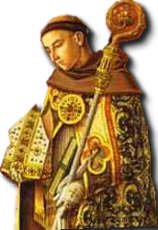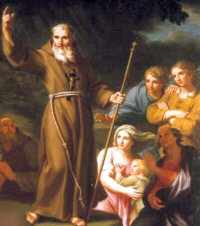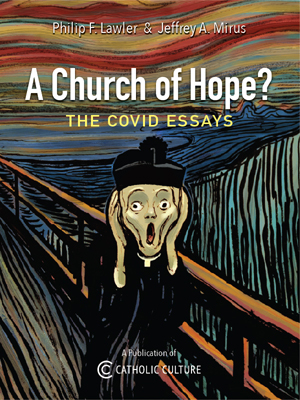Ordinary Time: October 23rd
Saturday of the Twenty-Ninth Week in Ordinary Time; Optional Memorial of St. John of Capistrano, Priest
» Enjoy our Liturgical Seasons series of e-books!
John was a native of Capistrano, in Italy. He became a Franciscan and was one of the great organizers of the struggle against the Mohammedans in the 15th century, when they threatened to overrun the whole of Europe. Mohammed II had taken Constantinope and was already marching against Belgrade, when Pope Callixtus III called St. John to preach the crusade; assisted by the Hungarian John Hunyadi, he gathered a strong Christian army, which defeated the Turks in the great battle of Belgrade (1453). He died in 1456.
Today in the previous calendar (1962) is the feast of St. Anthony Mary Claret which is now observed on October 24. St. John of Capistrano's feast is celebrated on March 28.
St. John of Capistrano
St. John was born in 1386 at Capistrano in the Italian Province of the Abruzzi. His father was a German knight and died when he was still young. St. John became a lawyer and attained the position of governor of Perugia. When war broke out between Perugia and Malatesta in 1416, St. John tried to broker a peace. Unfortunately, his opponents ignored the truce and St. John became a prisoner of war. On the death of his wife he entered the order of Friars Minor, was ordained and began to lead a very penitential life.
 John became a disciple of Saint Bernadine of Siena and a noted preacher while still a deacon, beginning his work in 1420. The world at the time was in need of strong men to work for salvation of souls. Thirty percent of the population was killed by the Black Plague, the Church was split in schism and there were several men claiming to be pope. As an Itinerant priest throughout Italy, Germany, Bohemia, Austria, Hungary, Poland, and Russia, St. John preached to tens of thousands and established communities of Franciscan renewal. He reportedly healed the sick by making the Sign of the Cross over them. He also wrote extensively, mainly against the heresies of the day.
John became a disciple of Saint Bernadine of Siena and a noted preacher while still a deacon, beginning his work in 1420. The world at the time was in need of strong men to work for salvation of souls. Thirty percent of the population was killed by the Black Plague, the Church was split in schism and there were several men claiming to be pope. As an Itinerant priest throughout Italy, Germany, Bohemia, Austria, Hungary, Poland, and Russia, St. John preached to tens of thousands and established communities of Franciscan renewal. He reportedly healed the sick by making the Sign of the Cross over them. He also wrote extensively, mainly against the heresies of the day.
He was successful in reconciling heretics. After the fall of Constantinople, he preached a crusade against the Muslim Turks. At age 70 he was commissioned by Pope Callistus II to lead it, and marched off at the head of 70,000 Christian soldiers. He won the great battle of Belgrade in the summer of 1456. He died in the field a few months later, but his army delivered Europe from the Muslims.
Patronage: judges; jurists; lawyers; military chaplains (given by Pope John Paul II on 10 February 1984); military ordinariate of the Philippines; Belgrade, Serbia; Capistrano, Italy
Symbols and Representation: man with a crucifix and lance, treading a turban underfoot; Franciscan with cross on his breast and carrying banner of the cross; Franciscan preaching, angels with rosaries and IHS above him; Franciscan pointing to a crucifix which he holds; crucifix; IHS banner; red cross; star
Highlights and Things to Do:
- St. John struggled with finding his vocation. Younger people can pray to St. John for help in discerning God's will for their lives.
- Find out more about St. John Capistrano:
- Learn more about the times that St. John Capistrano lived, such as the Crusades, the Black Plague, anti-popes.
- St. John is the patron of jurists. We can turn to him to help discern major decisions. We can also follow his example of strict self-discipline in order to think more clearly.
- In 1776 in Southern California, Father Junípero Serra founded the Mission of San Juan Capistrano, named for St. John, for mission work to the Indians. The mission is a historical site, and has both a Catholic Basilica and the original smaller chapel that are still used for Catholic liturgy. See the Wikipedia page and Franciscan Media article.
- There is also a tradition of the swallows returning to the Mission of San Juan Capistrano every March 19, the feast of St. Joseph. Find out more about this annual event. There is also a children's book Song of the Swallows by Leo Politi, which won the 1950 Caldecott Medal for the illustrations, that retells this tradition. There is a YouTube video read-aloud of the story.
- Although marked for St. Junípero, Catholic Cuisine has some feast day food suggestions for Franciscans and mission foods.






